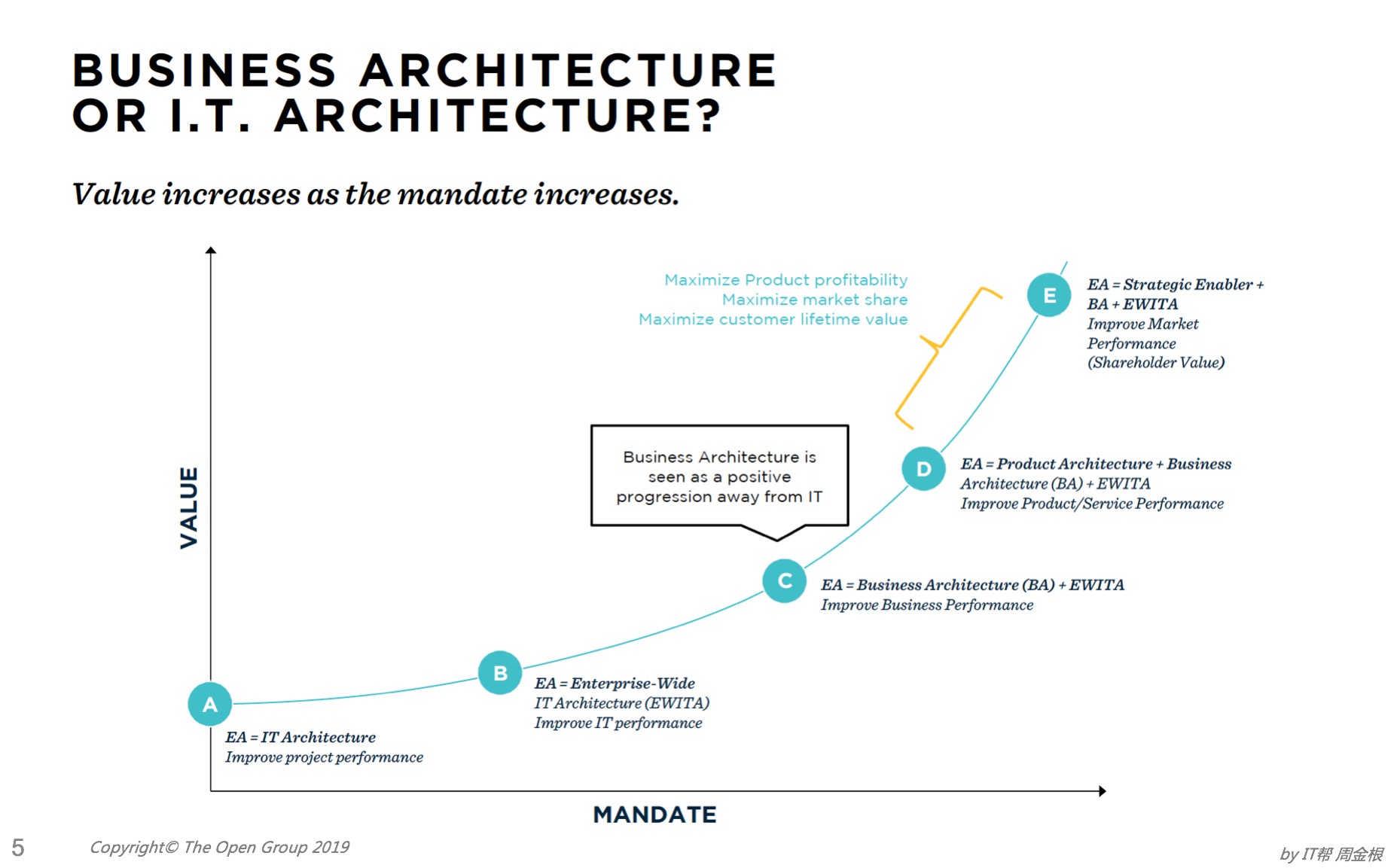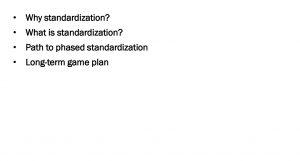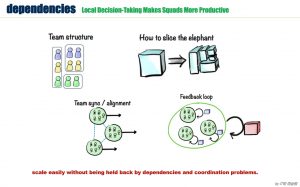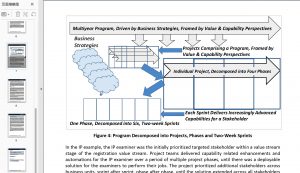“What is our mandate?” – I cannot count the number of times an architect (both enterprise, solution, integration and other) asked me that question. Mostly in the sense ‘can we dictate the solution?’ and then expected me to provide a clear answer. Perhaps I am slow-witted, but the question just baffles me. I mean, unless you have a God-given mandate, you always have to seek and earn the right to do Architecture.
When explaining that ultimate dictatorship will not be granted, a fairly common reaction is to point to another enterprise and claim that they got it right – here the architects dictate the solutions.
In this post, I will share my experiences on what our so-called mandate really is, how you increase it and some of the mechanisms resulting in frustrated architects. Let us start out by looking at why and if we need architects in the first place.

Everybody is doing architecture!
In most enterprises, a significant part of the employees are doing some kind of adjustments affecting the way the enterprise operates. These adjustments can be related to processes, organization, automation (including IT), changes to the business model or customer base with the intent to increase and/or improve the value creation. Whatever kind of change, fact is that they are re-designing / architecting the business. Being close to the problems, suggestions are often both welcomed and very qualified. In short you could say a significant part or even all employees are doing architecture and with a good deal of success.
Are we all architects? I think we have to agree, that many of our “ordinary” colleagues are doing architecture. The reason for this is simple – ask almost anyone to solve a given problem and a suggestion will appear. Fact-of-life is that we see a plentitude of both managers, project managers and other colleagues doing architecture.
So why do we need architects?
If everybody tends to do architecture, why do we need appointed architects?
Look at almost any company and you will see both the good and the bad results of ‘everybody doing architecture’. We cannot architect everything and ‘everybody doing architecture’ brings many high quality solutions. However, ‘everybody doing architecture’ is (together with the work of bad architects) the root cause of:
- Lack of structure (in data, processes, application landscape, …),
- Solutions providing local benefit instead of enterprise wide efficiency,
- Short-term gain, but long-term catastrophes.
When enterprises has seen these consequences a number of times, they are likely to invest in skilled architects. Your value offering as an architect lies in your salary being a multitude lower that the disasters that you prevent (and the options you identify).
If we need appointed architects, it must be because the architect can do a significantly better job than the “ordinary” employee or the architect can find solutions where the “ordinary” employee gives in. This is where I believe we will find the roots of the architecture mandate. The appointed architect has to be able to:
- Provide better architectures:
- Provide well-analyzed change suggestions,
- ensure fit to all of the enterprise (not just the specific department/project),
- and ensure a match of not only short but also long-term needs.
- Solve more complex problems:
- Can find the right solution even if the problem is highly complex,
- has the stamina to drill down
- and knows how to reduce complexity.
So what is the architecture mandate?
Being nominated architect (including Enterprise Architect) your mandate should be, that you are allowed to:
- Spend time to come up with a suitable architecture.
- Spend time building the architecture toolbox.
- Have your architectural suggestion heard.
- Re-earn right to do architecture by producing qualified and winning architectures.
Like it or not – this is the architecture mandate. This does to no extend provide a dictatorial right.
However, you may move beyond this starting point and succeed to increase the mandate significantly – even enough to appear as having ultimate dictatorship!
Provide winning architectures and increase the mandate
You increase your architecture mandate by producing a sequence of winning architectures. By the winning architecture I mean the solution that management chooses to implement. Winning does not mean the best! The best architecture far from always turns out as the winning architecture. Producing the winning architecture is a combination of:
- Providing the right architectural qualities,
- being able to win the ear of the customer
- and being able to convey the idea in terms that makes the customer buy-in.
Having delivered a number of successes, you will see that your mandate has increased. It basically equals the trust you have gained. You may gain so much trust, that your solutions will be the winning architecture even when providing poor solutions. Whether by high quality architecture work or by having a blind-trusting customer you consistently have to provide winning architectures as it increases your mandate.
The frustrated architect
Another way to increase your mandate may be to “borrow” it. If a respected architect (e.g. your manager) supports your architectural work, you may get an easy win. Just take care not to abuse the mandate whether your own or borrowed – losing means that both you and the respected architect loses trust (and thereby mandate). This also means that you should be diligent before you support a new architect or solution.
Based on the idea of the winning architecture, some of the most frustrating moments in your career as architect can be understood. Here is a few.
Have you noticed how senior managers surprisingly often ends up providing the winning architecture? Sometimes the senior manager in fact does deliver the best solution, but often the solution is just better presented. The main reason in my experience though is that the senior manager already had the ear of the decision makers and know the needs and motivations! Quite a few architects has with frustration seen the winning architecture being an expensive solution with few architectural qualities.
Being an architect, there is a good chance that you think being thorough is a core quality. Looking at the three bullets describing how to produce the winning architecture just the first focused on architectural qualities. From the moment the first architecture is presented the customer has an option. The clock is ticking. Much hated by many architect speed is (perceived or in reality) of greater importance than certainty. Being thorough is risky!
The ivory tower! Providing quick solutions are likely to backfire and result in a degrading mandate. Being thorough is also likely to be a losing strategy as other solutions wins by speed. Not delivering or providing a losing architecture degrades your trust and mandate and after a few failures, you earned a hard to escape label – the ivory tower architect.
The profile of the architect with dictatorial right
So does the architect with dictatorial right exist? I think you get close if you are:
- Able to provide solutions of high quality.
- Able to simplify the message.
- Ready to move fast when needed.
- Well-spoken and a splendid presenter.
- Good at identifying needs and motivations.
- Close to decision makers (or at least able to catch their attention when needed).
Combine this with the patience to provide a sequence of winning architectures that makes your decision makers sloppy and blindly count on you, and you may attain the quested dictatorship – “the architecture mandate”! I have in fact seen a number of architects getting close to being a dictatorial architect.
Relationship to SOLID EA
Personally I have no intention of attaining dictatorship, but SOLID EA can surely help you move far beyond the initial architecture mandate.
Focus in my work is to make sure that:
- The architecture toolbox is of continually increasing quality enabling me to do the best architectures and to produce it fast.
- Education, skills and training enabling me to identify the core success factors, break down the complexity, to analyze and to identify the solution exhibiting the right architectural qualities.
- Ability to convey the architecture in a conceivable and convincing way – usually through simplification.
Well-rooted step-stones toward an increased architecture mandate.
转:What is our Enterprise Architecture mandate?
https://clausthorsen.wordpress.com/2015/07/25/what-is-our-enterprise-architecture-mandate/


